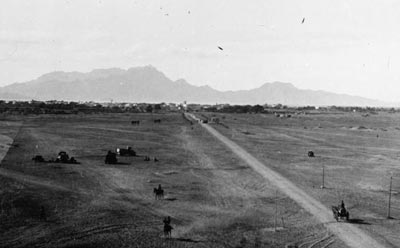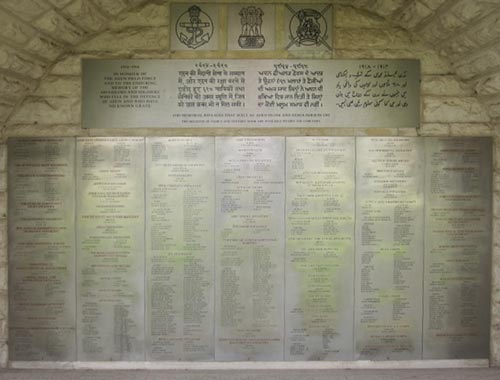Richard Shirley Skan was born, 13th February 1869 in Meridan, Warwickshire.
He was Christened on the 9th April 1869, at St. Andrew's, Bordesley, Warwick.
Richard married, Mary Olive Jones on the 6th May 1894, in Dudley.
They moved to Worcester, where they had their son Frank Ronald Skan.
The 1911 census has Richard's occupation as hairdresser and Frank is aged 14 and at school.
From Worcester they moved to The Firs, in Broadwas-on-Teme.
Four years later their son Frank who had joined the
Brecknockshire Battalion, South Wales Borderers
[Private 2334 South Wales Borderers TF Brecknock Battalion] then [Private 200697 South Wales Borderers]
fell on the 4th July 1915, in Aden, Yemen; and was buried at Heliopolis (Aden) Cemetery/Memorial Egypt.
1/1st Brecknockshire Battalion
August 1914: in Brecon. Part of South Wales Brigade, Welsh Division.
29 October 1914: left Brigade and sailed from Southampton with the Home Counties Division,
arriving Bombay 2 December.
6 December 1914: moved to Aden, arriving 16 December 1914
and coming under orders of the Aden Brigade.
6 August 1915: departed from Aden and returned to Bombay, arriving six days later.
Joined Mhow Brigade in 5th (Mhow) Division and remained at Mhow throughout the war.
Two half-companies were usually stationed at Indore.
During May 1915 the enemy was reported to be becoming more active, and during the latter half of June
reports indicated a possible Turkish advance on Lahej from Mawiyah. On definite information being received
that such an advance was about to be made, Major-General D. G. L. Shaw, commanding Aden Brigade,
ordered the Aden Moveable Column, under Lieutenant-Colonel H. F. A. Pearson, 23rd Sikh Pioneers, to
move out to Shaikh ‘Othman on the evening of the 3rd July. Early the following morning the advance was
continued to Lahej, to which place the Aden Troop had previously been despatched. The intense heat,
sand and shortage of water rendered the march and the subsequent operations most trying, but
nevertheless the advanced guard reached their objective, and engaged the Turks just beyond Lahej on
the evening of the
4th July. But the desertion of the hired camels and the severe climatic conditions so
delayed and distressed the main body as to necessitate a withdrawal from Lahej to Khor ‘Maksar on July 5th.
In recording this, Major-General Shaw pays a tribute to the devotion to duty of the men of the Royal Artillery,
who effected the withdrawal of their guns under the most trying conditions.
On the withdrawal of the Aden Moveable Column to the Khor Maksar line the Turks occupied Shaikh ‘Othman,
and it was decided to increase temporarily the Aden garrison.

Return
©peh




